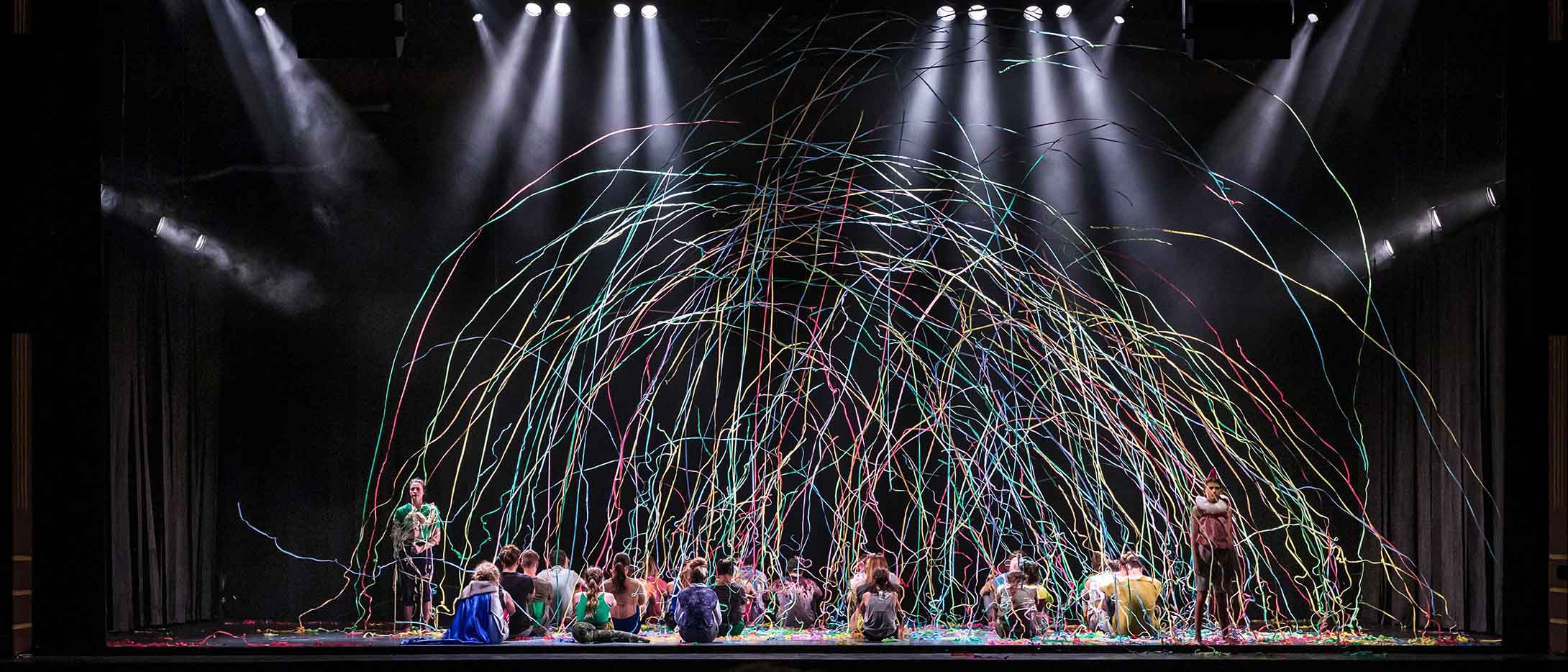Last Friday, Stanford Live opened its fall season with “Leviathan by Circa,” a production that combined elements of circus and contemporary dance. The 36 members of the cast included Circa Contemporary Circus, a world-acclaimed Australian performance company, as well as Stanford students and local Bay Area artists. Blending improvisation and precise choreography with thrilling acrobatics, the show was a spectacular display of trust and community.
Stanford students who participated in the show took part in the three-week arts intensive course “Circa’s Leviathan: Art of Circus Movement” taught by Theater and Performance Studies instructor Aleta Hayes. Although many of them had previous experience in performing arts such as theater, gymnastics or dance, the art of circus movement was a new experience.
According to Yaron Lifschitz, director of “Leviathan,” the production was inspired by the question of whether we are “free or oppressed by our interconnectedness, or do we define ourselves as individuals or part of a society.”
From the very first scene, the show placed the dilemma between independence and interdependence into the forefront as three performers stood on each other’s shoulders, tilting forward until each person was forced to break from the structure and roll onto the ground.
One of the most impressive circus techniques of the night occurred when four levels of performers stood on top of each other, drawing collective gasps and applause from the audience. In another scene, one cast member walked atop the heads of everyone else, as they slowly moved across the stage.
Individual artists lifted above heads and thrown in the air from person to person were sharply contrasted with times when the entire cast was onstage and moving slowly en masse, as if every individual was a small part of a giant superorganism.
“Leviathan” was split into seven acts, and each portrayed a different theme and setting. The first section, “Perilous Crossings,” featured a suspended metal grid where the 36 performers took turns tumbling, balancing and soaring in the air. At one point, they climbed from one side of the grid to the other, creating the impression of a troupe of baboons crossing a forest canopy. The accompanying music cracked, stretched and groaned, reflecting the movement of the artists.
In the second section, “Inside the Lines,” an overhead camera revealed a gridded floor of white tape, with a solo artist confined into an increasingly smaller square. As each cast member took their place in the grid, they suddenly transgressed the boundaries of the space by moving in a spiral direction. They performed impressive acrobatic feats, doing a flip while standing on one person’s shoulders and landing in the same position.
Towards the end of the show, each performer looked into a camera at the back of the stage, allowing the audience to see their face. It was a heartening reminder that individuality need not be subsumed by society, but that it was possible to maintain our independence while contributing to a community.
Throughout “Leviathan,” the message that community was necessary to uplift (literally) and grow was strongly apparent. However, some creative choices of the show remained elusive. The significance of certain details such as a girl staring into the audience wearing a birthday hat, a woman covered in white tape and streamers across the stage floor were often difficult to decipher.
Despite this small shortcoming, the ability to create a seamless show with professional circus artists, rapidly trained Stanford students and local Bay Area performers truly demonstrated the power of what can be achieved through exploring new terrains together. Indeed, Circa’s commitment to collaborating with community artists underscores the company’s vision of contemporary circus as an inclusive form of expression.
As Stanford Live Executive Director Chris Lorway said before the show to a packed audience in Memorial Auditorium, “What’s amazing about our students on campus is not that they’re just computer scientists or artists, but that they’re bold and daring and willing to try new things.”
Editor’s Note: This article is a review and includes subjective thoughts, opinions and critiques.
